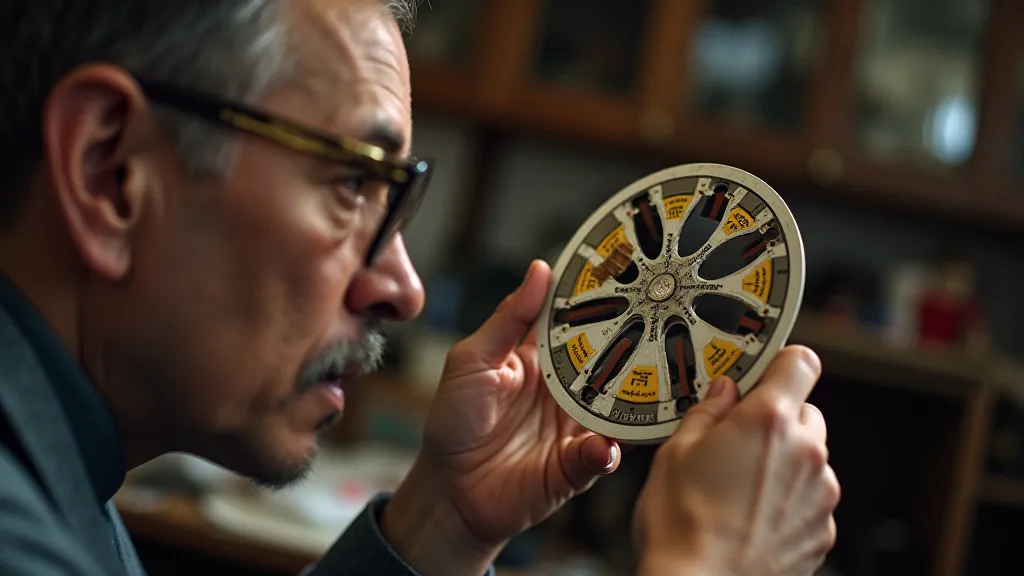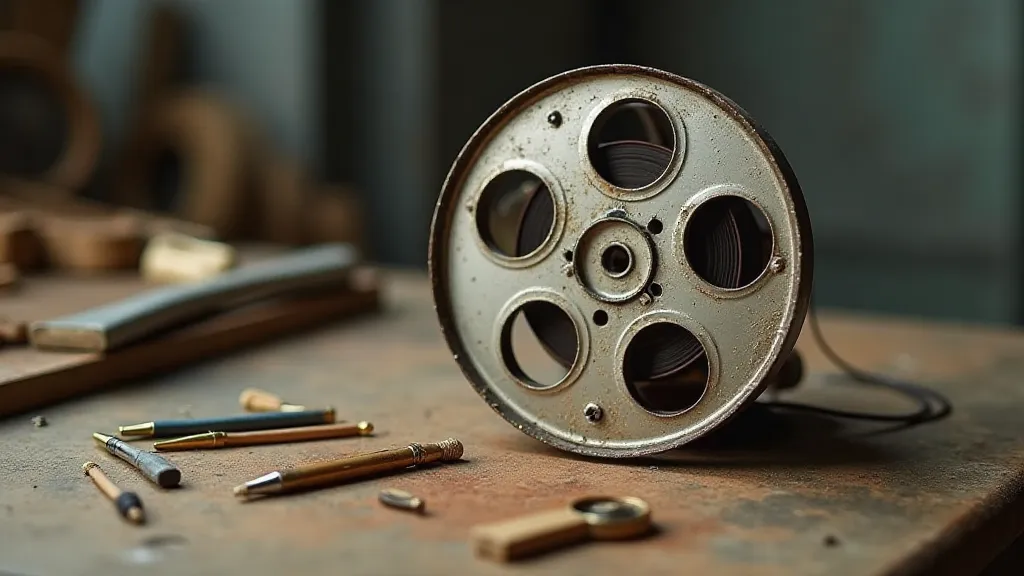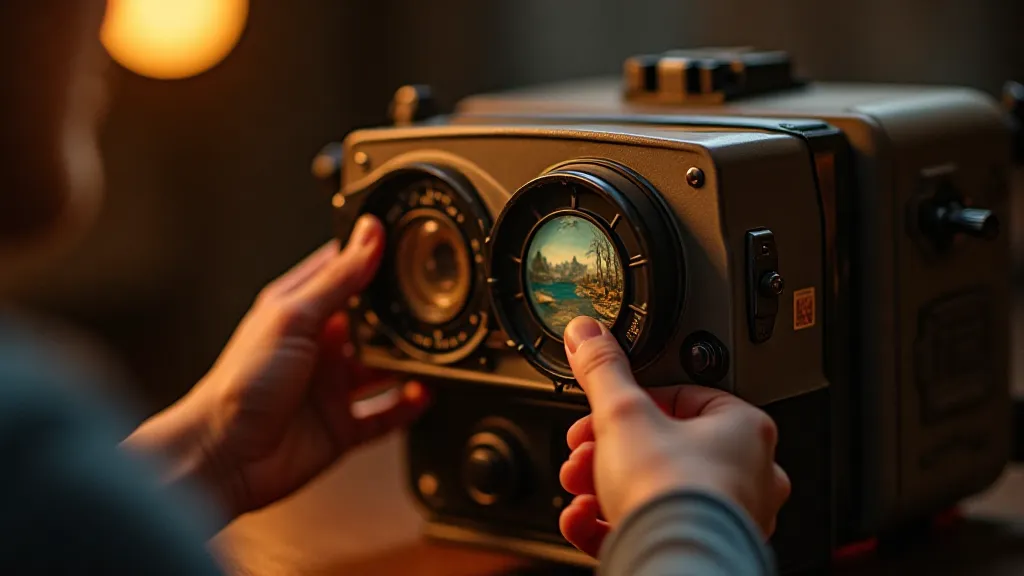The Fragility of Moments: Ethics of View-Master Reel Restoration
There's a peculiar intimacy that settles over you when you hold a vintage View-Master reel. It's not just the smooth, cool plastic of the disc, but the tangible weight of history nestled in your palm. Inside, tiny photographic vignettes – family vacations, bustling cityscapes, fantastical landscapes – are preserved, waiting to be reawakened. They are fragments of lives lived, moments frozen in time. And as a restorer, the responsibility of handling these relics feels profound, especially when considering the delicate balance between preservation and alteration. It's a conversation about ethics as much as technique.
My journey into View-Master reel restoration began, as many collecting passions do, with a simple curiosity. I inherited a box of my grandfather’s old reels. He was a traveling salesman in the 1950s and 60s, and the reels were his visual postcards from across the country. Seeing those faded images, the slight crackle of the film as the mechanism whirred, sparked a desire not just to *own* them, but to *revive* them. But the more I learned about the process, the more acutely I felt the weight of my actions.
The Allure and the Decline of the View-Master
Before diving into the ethics of restoration, it's important to understand the historical context. The View-Master, invented in the 1930s by Carl Fischer, was initially conceived as a way to share stereoscopic images – offering a then-novel 3D experience. Initially marketed to adults, it quickly found a massive audience in children, fueled by the post-war boom and the rising popularity of tourism. The company’s licensing agreements with various organizations and photographers resulted in a staggering array of reels, documenting everything from Disneyland's opening to the intricacies of the Taj Mahal.
Sadly, the format’s popularity waned in the 1990s with the rise of video games and other entertainment options. Decades of storage, often in less-than-ideal conditions, have taken their toll. Many reels suffer from issues like brittleness, discoloration, scratched film, and separation of the cellophane backing.

The Tightrope of Restoration: What is Acceptable?
The primary ethical consideration in any restoration project is minimizing alteration. As restorers, we are not trying to create something *new*. We are stewards of the past, entrusted with preserving what remains. This means acknowledging the reel's history – the imperfections and damage are part of its story. To aggressively ‘fix’ these flaws can strip the reel of its authenticity and diminish its historical significance.
For example, a slightly yellowed reel tells a story of age and exposure to light. While cleaning might reduce the discoloration, it also removes a layer of that history. Similarly, small scratches are often unavoidable, and attempting to eliminate every single one can lead to an unnatural, over-processed appearance. A reel that looks "too perfect" is often less valuable to collectors, precisely because it lacks that trace of its past.
However, some interventions are generally considered acceptable. Carefully cleaning dirt and debris is vital, as is re-adhering loose cellophane backing. This prevents further damage and ensures the images remain legible. The crucial factor here is using archival-quality materials—those that won't degrade and potentially harm the original film over time. Using incorrect cleaning solutions, for instance, can permanently damage the images, a far worse outcome than leaving the reel in its slightly imperfect state.
The Devil is in the Details: Material Choices and Techniques
The selection of materials is paramount. Using acidic adhesives can lead to the film deteriorating even faster. Carefully researching and sourcing appropriate archival-quality adhesives, cleaning solutions, and replacement materials is a continuous learning process. Sometimes, accepting that certain repairs are beyond safe execution is the most ethical choice.
Technique is equally important. Overly aggressive cleaning can scratch the film. Improper re-backing can cause permanent distortion. Patience and a steady hand are essential. It’s a slow, deliberate process, requiring a deep respect for the fragility of the materials.
I recall attempting to repair a reel documenting a 1940s vacation in Hawaii. The cellophane backing was severely damaged, and the film was brittle. My initial attempt to re-back it resulted in a small tear. It was a frustrating moment, a stark reminder of the potential for unintended consequences. I had to accept that some level of damage was unavoidable and that I needed to refine my technique.

Beyond the Technical: The Collector's Perspective
Ethical restoration isn’s just about the materials and techniques; it's also about understanding the collector’s perspective. Many collectors value reels precisely *because* of their imperfections – they are tangible links to the past. A reel with a slight discoloration or a few scratches can tell a more compelling story than a pristine, untouched copy.
Moreover, documenting restoration work is crucial. Keeping a detailed record of the interventions made – the materials used, the techniques employed – allows future collectors to understand the reel's history and appreciate the work involved in preserving it. Transparency builds trust and respects the integrity of the artifact.
The Ongoing Conversation
The ethics of View-Master reel restoration, like that of any antique toy restoration, is an ongoing conversation. There are no easy answers, and each reel presents a unique set of challenges. It demands humility, patience, and a deep appreciation for the power of these small discs to transport us to another time and place.
Ultimately, our responsibility as restorers is to ensure that these fragments of the past continue to be enjoyed and appreciated for generations to come – while respecting the stories they silently hold.






